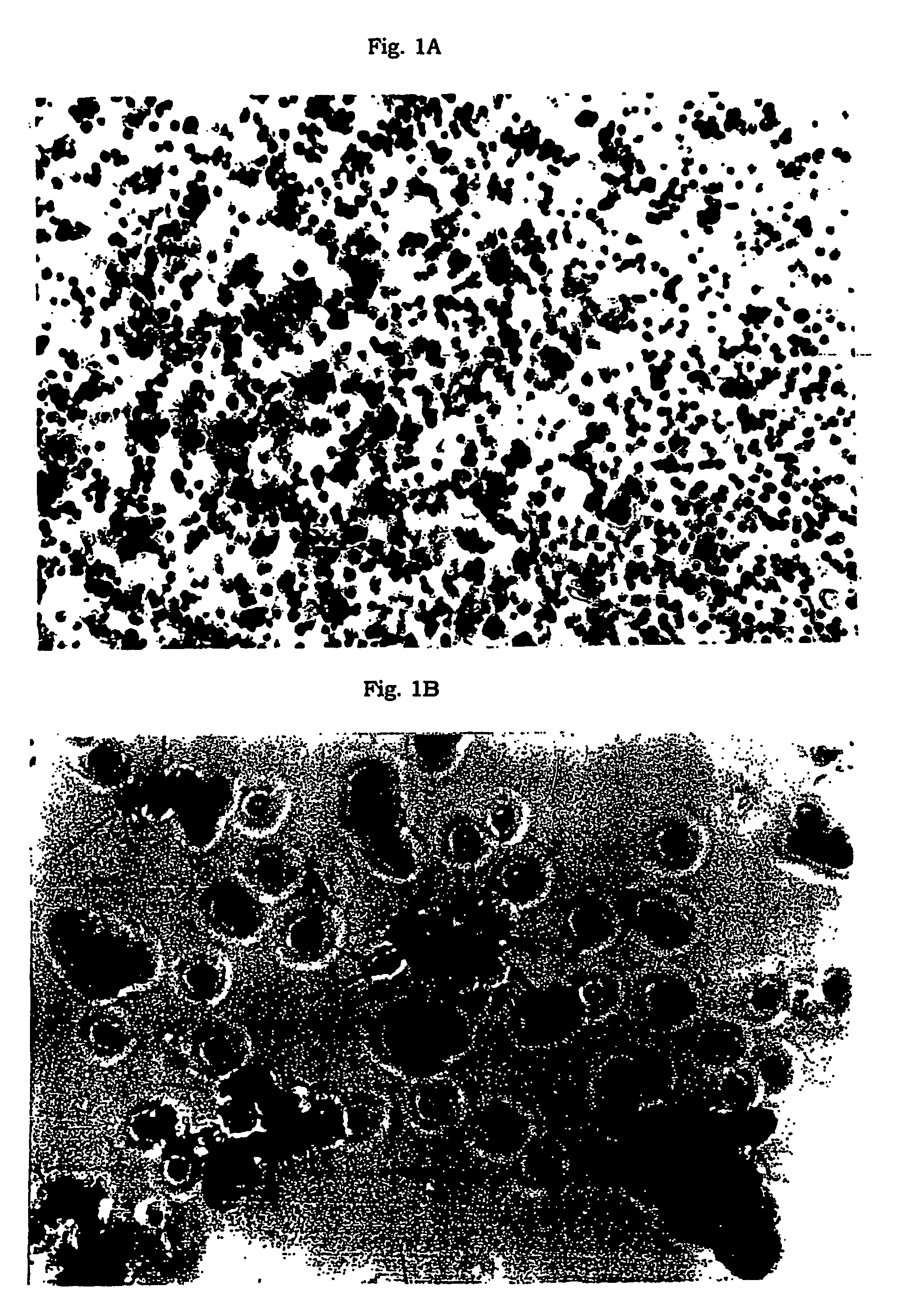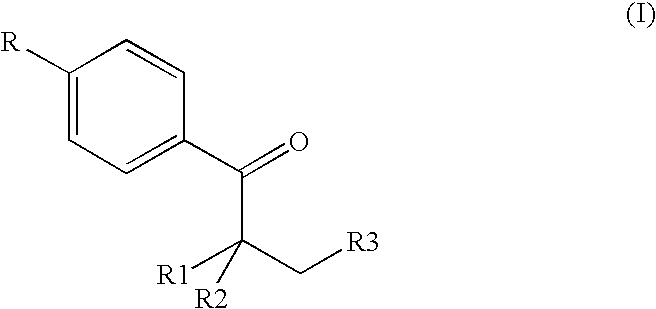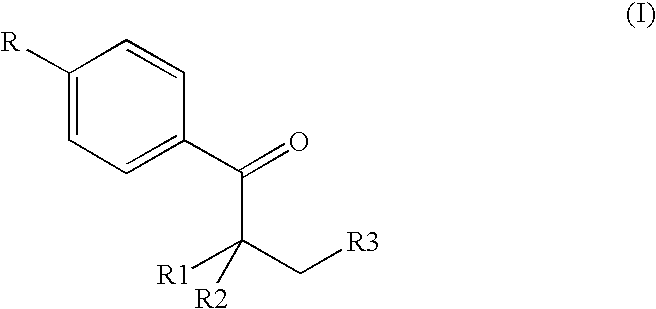Ester derivatives of hyaluronic acid for the preparation of hydrogel materials by photocuring
a technology of ester derivatives and hyaluronic acid, which is applied in the direction of aerosol delivery, prosthesis, drug compositions, etc., can solve the problems of difficult removal, low molecular weight compounds, and toxic cross-linking agents
- Summary
- Abstract
- Description
- Claims
- Application Information
AI Technical Summary
Benefits of technology
Problems solved by technology
Method used
Image
Examples
example 1
Preparation of a Hyaluronic Acid Derivative with 70% of the Carboxylic Groups Esterified with 2-hydroxy-4-(2-hydroxyethoxy)-2-methylpropiophenone (HHMP) and the Remaining 30% of the carboxylic groups salified with sodium
[0056]6.21 g of tetrabutyl ammonium salt of hyaluronic acid, with a molecular weight of 180,000 Da (10 meq.) are solubilised in 248 ml of dimethylsulphoxide (DMSO) at room temperature. To this solution 2 g of HHMP bromide (7 meq) are added, and the so obtained solution is maintained at 37° C. for 48 hours. A 2.5% (w / w) solution of NaCl in water is then added and the resulting mixture is poured under stirring into 750 ml of acetone. A precipitate is formed which is then filtered and washed three times with 100 ml of a mixture acetone:water 5:1, then three times with 100 ml of acetone and lastly vacuum-dried for 24 hours at 30° C. 5.3 g of the product of the title is thus obtained. Quantitative determination of the content of HHMP is conducted by HPLC (high pressure li...
example 2
Preparation of a Hyaluronic Acid Derivative with 50% of the Carboxylic Groups Esterified with 2-hydroxy-4-(2-hydroxyethoxy)-2-methylpropiophenone (HHMP) and the Remaining 50% of the Carboxylic Groups Salified with Sodium
[0057]6.21 g of tetrabutyl ammonium salt of hyaluronic acid having a molecular weight of 180,000 Da (10 meq) are solubilised in 248 ml of DMSO at room temperature. To this solution 1.4 g of HHMP bromide (5 meq) are added, and the so obtained solution is maintained at 37° C. for 36 hours. A 2.5% (w / w) solution of NaCl in water is then added and the resulting mixture is poured under stirring into 750 ml of acetone. A precipitate is formed which is filtered and washed three times in 100 ml of the mixture acetone:water 5:1, then three times with 100 ml of acetone and finally vacuum dried for 24 hours at 30° C.
[0058]4.9 g of the desired product of the title is thus obtained. Quantitative determination of the HHMP content is performed by HPLC after alkaline hydrolysis. The...
example 3
Preparation of a Hyaluronic Acid Derivative with 25% of the Carboxylic Groups Esterified with 2-hydroxy-4-(2-hydroxyethoxy)-2-methylpropiophenone (HHMP) and the Remaining 75% of the Carboxylic Groups Salified with Sodium
[0059]6.21 g of tetrabutyl ammonium salt of hyaluronic acid having a molecular weight of 180,000 Da (10 meq) are solubilised in 248 ml of DMSO at room temperature. To this solution 0.72 g of HHMP bromide (2.5 meq) are added and the solution is maintained at 37° C. for 24 hours. A 2.5% (w / w) solution of NaCl in water is then added and the resulting mixture is poured into 750 ml of acetone under stirring. A precipitate is formed which is filtered and washed three times in 100 ml of the mixture acetone:water 5:1, then three times with 100 ml of acetone and finally vacuum dried for 24 hours at 30° C.
[0060]4.4 g of the desired product of the title are thus obtained. Quantitative determination of the HHMP content is performed by HPLC after alkaline hydrolysis. The total co...
PUM
| Property | Measurement | Unit |
|---|---|---|
| molecular weight | aaaaa | aaaaa |
| molecular weight | aaaaa | aaaaa |
| molecular weight | aaaaa | aaaaa |
Abstract
Description
Claims
Application Information
 Login to View More
Login to View More - R&D
- Intellectual Property
- Life Sciences
- Materials
- Tech Scout
- Unparalleled Data Quality
- Higher Quality Content
- 60% Fewer Hallucinations
Browse by: Latest US Patents, China's latest patents, Technical Efficacy Thesaurus, Application Domain, Technology Topic, Popular Technical Reports.
© 2025 PatSnap. All rights reserved.Legal|Privacy policy|Modern Slavery Act Transparency Statement|Sitemap|About US| Contact US: help@patsnap.com



